
Distillations | Science History Institute
Science History Institute
1 Listener
All episodes
Best episodes
Top 10 Distillations | Science History Institute Episodes
Goodpods has curated a list of the 10 best Distillations | Science History Institute episodes, ranked by the number of listens and likes each episode have garnered from our listeners. If you are listening to Distillations | Science History Institute for the first time, there's no better place to start than with one of these standout episodes. If you are a fan of the show, vote for your favorite Distillations | Science History Institute episode by adding your comments to the episode page.
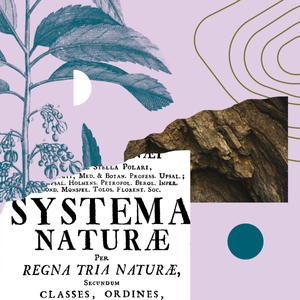
Origin Stories
Distillations | Science History Institute
02/07/23 • 33 min
It might seem as though the way we think about race now is how we’ve always thought about it—but it isn’t. Race was born out of the Enlightenment in Europe, along with the invention of modern western science. And it was tied to the politics of the age—imperialism and later slavery. This episode traces the origins of race science to the Enlightenment, examines how the Bible influenced racial theories, and considers how we still have a hard time letting go of the idea of race.
About Innate: How Science Invented the Myth of Race“Origin Stories” is Episode 1 of Innate: How Science Invented the Myth of Race, a podcast and magazine project that explores the historical roots and persistent legacies of racism in American science and medicine. Published through Distillations, the Science History Institute’s highly acclaimed digital content platform, the project examines the scientific origins of support for racist theories, practices, and policies. Innate is made possible in part by the National Endowment for the Humanities: Democracy demands wisdom.
CreditsHosts: Alexis Pedrick and Elisabeth Berry Drago Senior Producer: Mariel Carr Producer: Rigoberto Hernandez Associate Producer: Padmini Raghunath Audio Engineer: Jonathan Pfeffer
"Innate Theme" composed by Jonathan Pfeffer. Additional music by Blue Dot Sessions. Special thanks to our colleagues, Jacqueline Boytim and James Voelkel, for their help with this episode.
Resource ListArchaeology under the Blinding Light of Race, by Michael Blakey
Breathing Race into the Machine: the Surprising Career of the Spirometer from Plantation to Genetics, by Lundy Braun
Divine Variations: How Christian Thought Became Racial Science, by Terence Keel
Fatal Invention: How Science, Politics, and Big Business Re-create Race in the Twenty-first Century, by Dorothy Roberts
"Jesus Loves the little Children," song by Cedarmont Kids
Medicalizing Blackness: Making Racial Differences in the Atlantic World, 1780-1840, by Rana Hogarth
The Nuremberg Chronicle, by Hartmann Schedel
Superior: The Return of Race Science, by Angela Saini
Find the full transcript here.
1 Listener
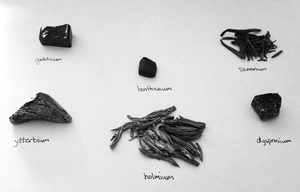
Rare Earths: The Hidden Cost to Their Magic, Part 1
Distillations | Science History Institute
06/25/19 • 25 min
The 17 rare earth elements are often called the spices or vitamins of industry. While we don’t need much of them, they’re sprinkled in small amounts through our most powerful, futuristic, and dare we say it, magical tools. They power our iPhones and computers; they’re in wind turbines and hybrid cars. They’re in dental implants, X-ray machines, and life-saving cancer drugs. They have unusual magnetic and electrical properties that make our gadgets faster, stronger, and lighter. And we've all been coasting along enjoying their magic for a while now. In fact, we've come to expect magic. But magic comes at a cost, and in the case of mining and processing rare earths, that cost is environmental devastation. Most of us in the Western world aren’t aware of the destruction/ because most rare earths are mined elsewhere. But some scientists are trying to find a more environmentally sound way to get them.
CreditsHosts: Alexis Pedrick and Elisabeth Berry Drago Reporter: Rigoberto Hernandez Senior Producer: Mariel Carr Producer: Rigoberto Hernandez Audio Engineer: James Morrison Music courtesy of the Audio Network, Blue Dot Sessions, and the Free Music Archive.
Research NotesAbraham, David. Elements of Power. New Haven, CT: Yale University Press, 2015.
The Californian Rare Earths Mine Caught between Trump and China. Bloomberg News, September 26, 2018.
“China-Japan Boat Crash Video Posted.” Al Jazeera, November 5, 2010.
“China Threatens to Cut Off Rare Earth Minerals as Trade War Escalates.” MSNBC, May 30, 2019.
“Colorado Experience: Uranium Mania.” Rocky Mountain PBS, November 2, 2017.
“Critical Materials Strategy.” U.S. Department of Energy, December 2010.
Desai, Pratima. “Tesla’s Electric Motor Shift to Spur Demand for Rare Earth Neodymium.”Reuters, March 12, 2018.
Gifford, Rob. “Yellow River Pollution Is Price of Economic Growth.” National Public Radio, All Things Considered, December 11, 2007.
Haxel, Gordon, Hedrick, James, Orris, Greta. “Rare Earth Elements—Critical Resources for High Technology.” U.S. Geological Survey, Fact Sheet 087-02, November 20, 2002.
Kalantzakos, Sophia. China and the Geopolitics of Rare Earths. New York: Oxford University Press, 2018.
Kean, Sam. “Ytterby: The Tiny Swedish Island That Gave the Periodic Table Four Different Elements.” Slate, July 16, 2010.
Kim, Meeri. “Exposing the Trail of Devastation.” Sarah Lawrence College Magazine,” Fall 2018.
Klinger, Julie. Rare Earth Frontiers. Ithaca, NY: Cornell University Press, 2017.
Lovins, Amory. “Clean Energy and Rare Earths: Why Not to Worry.” Bulletin of the Atomic Scientist...
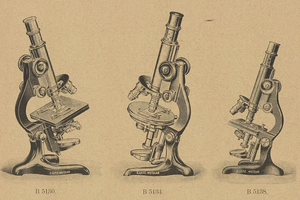
Science and Disability
Distillations | Science History Institute
08/11/20 • 40 min
Everyone knows that observation is a key part of the scientific method, but what does that mean for scientists who can’t see? Judith Summers-Gates is a successful, visually impaired chemist who uses a telescope to read street signs. If the thought of a blind scientist gives you pause, you’re not alone. But stop and ask yourself why. What assumptions do we make about how knowledge is produced? And who gets to produce it? And who gets to participate in science?
In this episode we go deep into the history of how vision came to dominate scientific observation and how blind scientists challenge our assumptions. This is the first of two episodes about science and disability and was produced in collaboration with the Science and Disability oral history project at the Science History Institute.
CreditsHosts: Alexis Pedrick and Elisabeth Berry Drago Senior Producer: Mariel Carr Producer: Rigoberto Hernandez Audio Engineer: James Morrison
Resource ListLemonick, Sam. “Artificial intelligence tools could benefit chemists with disabilities. So why aren’t they?” C&EN, March 18, 2019.
Martucci, Jessica. “History Lab: Through the Lens of Disability.” Science History Institute, June 22, 2019.
Martucci, Jessica. “Through the Lens of Disability.” Distillations, November 8, 2018.
Martucci, Jessica. “Science and Disability.” Distillations, August 18, 2017.
Slaton, Amy. “Body? What Body? Considering Ability and Disability in STEM Disciplines.”120th ASEE Annual Conference & Exposition, January 23, 2013.
Summers-Gates, Judith. Oral history conducted on 20 January and 6 February 2017 by Jessica Martucci and Lee Sullivan Berry, Science and Disability project, Science History Institute.
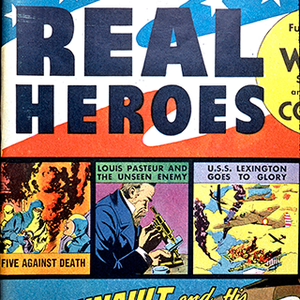
Drawing History: Telling the Stories of Science through Comics and Graphic Novels
Distillations | Science History Institute
02/04/14 • 21 min
How do you show what the inside of an atom looks like? Or how a scientist feels in the moment of discovery? We decided to approach the human stories of science in a new way: by visualizing them.
First we visit author and illustrator Jonathan Fetter-Vorm in his studio. Then we stop in on a college animation class and hear from students creating cartoons about chemistry and fairies.
Then we talk to historian Bert Hansen and author and Jonathan Fetter-Vorm. They tell us how the comics of the 1930s, 40s and 50s relayed stories of “real heroes”—including doctors, chemists and physicists, and how new graphic genres are engaging readers and sparking their interest in history and science. They both suggest that surprise, emotion, and showing the impossible all work to engage readers in ways that written words alone cannot.
SHOW CLOCK:
00:04 Introduction
01:15 Studio visit #1: Jonathan Fetter-Vorm in Brooklyn
03:54 Studio visit #2: University of the Arts in Philadelphia
07:00 Interview with Bert Hansen and Jonathan Fetter-Vorm
15:06 Reflections from Bob and Michal
LINKS TO CONTENT:
"Heroism in Medical Science" from Dupont's radio drama, Cavalcade of America
"Now I am become Death" Robert Oppenheimer speech
RELATED VIDEOS:
"Drawing Stories of Science with Jonathan Fetter-Vorm"
"How the Public Became Interested in Medical Science"
CREDITS:
Hosts: Michal Meyer and Robert Kenworthy
Guests: Jonathan Fetter-Vorm and Bert Hansen
Reporter, Producer & Editor: Mariel Carr
MUSIC:
“Stabbings”- Moby, mobygratis
"Isolate"- Moby, mobygratis
“The Plaintive Heating Griddle”- Ergo Phizmiz, Free Music Archive
“Awake in the Dream”- Infinite Third, Free Music Archive
"Sunny Day"- The Rabbits, Free Music Archive
"Do What You Can"- Lee Rosevere, Free Music Archive
"My Friends"- Quiet Orchestra, Free Music Archive
“Tragic”- Semyon, Free Music Archive
Check out Distillations magazine at distillations.org, where you'll find articles, videos, and our podcast.
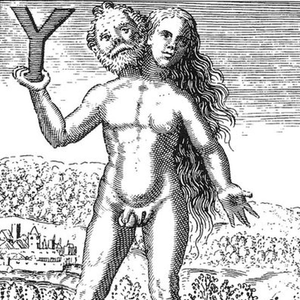
Sex and Gender: What We Know and Don’t Know
Distillations | Science History Institute
12/01/15 • 24 min
Several years ago historian of medicine Alice Dreger found herself in a room full of intersexed people, individuals with reproductive or sexual anatomy that is neither typically female nor male. Dreger noticed something strange: many of them had teeth that were in bad shape. She soon learned that many of them had endured such traumatic experiences with doctors that they wouldn’t go near anyone in a white coat, including dentists.
We were astonished by this story, so we asked Dreger to tell us more. She joined us for our December podcast alongside Eric Vilain, a medical geneticist and director of the Center for Gender-based Biology at UCLA. While intersex, transgender, and transsexual issues have recently entered the mainstream, our guests explain that there have always been those whose anatomy or identity prevents them from fitting neatly into the categories of male or female. And even with this newfound exposure, tensions continue to exist for them all.
But first we’ll hear about the experiences of a transgender couple desperate to conceive a child, but who struggled to find a willing doctor. Mariel Carr visits them at home in Philadelphia, where they’re adapting to life with an infant.
Show Clock:00:03 Introduction 01:26 Feature story: "The Pregnant Man" 14:48 Interview with Alice Dreger and Eric Vilain
Credits:Hosts: Michal Meyer and Bob Kenworthy Guests: Alice Dreger and Eric Vilain Reporter: Mariel Carr Producer: Mariel CarrAssociate Producer: Rigoberto Hernandez
Music:Music courtesy of the Audio Network.
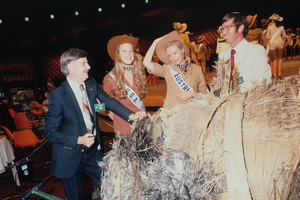
Space Junk
Distillations | Science History Institute
09/08/20 • 58 min
Outer space is crowded. Satellites, pieces of rocket, and stuff that astronauts left behind, such as cameras and poop, are just floating around. This space junk can pose a threat to our communication systems.
In this episode we talk with Lisa Ruth Rand, a fellow at the Science History Institute, about her upcoming book on space junk. She tells us how space weather—that’s right, there’s space weather—can have an effect on what falls on Earth. She also talks about how our views on space debris reveal our attitudes back on Earth and how space junk truly made the space age global.
CreditsHosts: Alexis Pedrick and Elisabeth Berry Drago Senior Producer: Mariel Carr Producer: Rigoberto Hernandez Audio Engineer: James Morrison
Resource ListInterview with Marie Ruman. Canadian Broadcasting Corporation, January 24, 1978.
Judd, Bridget. “NASA’s Skylab met its demise in Australia more than 40 years ago—but was it really an accident?” Australian Broadcasting Corporation, May 30, 2020.
The MacNeil/Lehrer Report, “Cosmos 954.” January 25, 1978, American Archive of Public Broadcasting.
Rand, Lisa Ruth. “Orbital Decay: Space Junk and the Environmental History of Earth’s Planetary Borderlands.” PhD diss., University of Pennsylvania, 2016.
Rand, Lisa Ruth. “Wasted Space: The History of Orbiting Junk.” Science History Institute, December 5, 2019.
Trudeau, Pierre Elliott. Speech at the House of Commons of Canada, January 24, 1978.

Human-Centered Therapy . . . with Robots
Distillations | Science History Institute
08/09/16 • 28 min
Now that the U.S. Department of Veterans Affairs recognizes post-traumatic stress disorder as a significant issue among veterans, they’ve uncovered another problem—there aren’t enough therapists to go around. Virtual reality experts at the University of Southern California have a solution: robots. Reporter Anna Stitt explains how advocates see these “therapy bots” as enhancing the field of therapy; they don’t tire out, they don’t need a salary, and patients are often more honest with them than human therapists. The only problem? Some people are worried that these therapy bots will one day replace humans.
Fears of artificial intelligence aren’t new, but they do seem increasingly common. Elon Musk declared that creating artificial intelligence is akin to "summoning the demon.” And Hollywood has done a solid job of convincing us that we’re approaching an age of artificial superintelligence—when machines’ capabilities will greatly exceed those of humans. We turned to philosopher and University of California, Berkeley professor John Searle to get his take on how realistic these concerns are. He says he takes the threat just as seriously as if someone said “shoes have been walked on for centuries. Any day now, they might come out of the closet and walk all over us."
Show Clock
00:04 Intro
02:06 Human-Centered Therapy....with Robots
19:56 John Searle interview
Credits
Hosts: Michal Meyer and Bob Kenworthy
Guest: John Searle
Reporter: Anna Stitt
Producer: Mariel Carr
Associate Producer: Rigoberto Hernandez
Music
Music courtesy of the Audio Network.

Is Space the Place? Trying to Save Humanity by Mining Asteroids
Distillations | Science History Institute
01/05/16 • 22 min
2015 was a good year for outer space. Star Wars: Episode VII came out, NASA started hiring astronauts again, SpaceX successfully launched and returned a rocket, and the U.S. Congress passed the SPACE Act of 2015—a bill that gives any American who extracts resources from an asteroid legal rights to the bounty they reap. Since no one has yet mined an asteroid this legislation might seem premature, but it’s essential to the future of two Silicon Valley asteroid mining companies. That’s right, they already exist. They’re just waiting for humans to start colonizing space.
Reporters Katie Gilbert and Annie Costakis talk to Daniel Faber, the founder of Deep Space Industries, about his dream: to build the space equivalent of Home Depot, as well as fueling stations and manufacturing plants. They also explain a few of the untested theories behind asteroid mining.
We wanted to know more about the history of space dreaming and space colonies, so we talked to Patrick McCray, a historian of science and technology and the author of The Visioneers: How a Group of Elite Scientists Pursued Space Colonies, Nanotechnologies, and a Limitless Future. He says utopian space visions have long filled the heads of scientifically minded dreamers, especially when life on Earth isn’t going so well.
Show Clock:00:03 Introduction01:26 Will asteroid mining save us?12:40 Who were the visioneers?
Credits:Hosts: Michal Meyer and Bob KenworthyGuest: Patrick McCrayReporters: Katie Gilbert and Annie CostakisProducer: Mariel CarrAssociate Producer: Rigoberto Hernandez
Music:"Boop" By Podington Bear, courtesy of the Free Music Archive.
Additional music courtesy of the Audio Network.
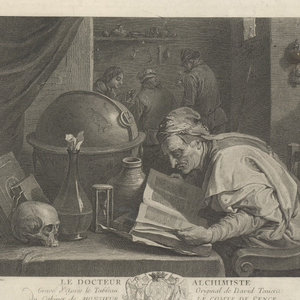
Promo: LIVE Halloween show!
Distillations | Science History Institute
10/24/19 • 0 min
Come see Distillations LIVE for our Halloween Spooktacular! The show is Wednesday, October 30th at 7pm at the Science History Institute in Old City Philadelphia.

Preview: Treating America's Opioid Addiction, Part 2
Distillations | Science History Institute
08/31/18 • 1 min
In our next episode we’re continuing our three-part series on the history of opioid addiction treatment in the United States. And we’re going back to the early 1960s, when the foundations for our modern opioid addiction treatment system were being built--starting with a controversial drug rehabilitation program called Synanon.
Tune in to our next episode, Synanon and the Tunnel Back to the Human Race, on September 18.
Show more best episodes

Show more best episodes
FAQ
How many episodes does Distillations | Science History Institute have?
Distillations | Science History Institute currently has 350 episodes available.
What topics does Distillations | Science History Institute cover?
The podcast is about Society, History, Chemistry, Podcasts, Technology and Science.
What is the most popular episode on Distillations | Science History Institute?
The episode title 'Origin Stories' is the most popular.
What is the average episode length on Distillations | Science History Institute?
The average episode length on Distillations | Science History Institute is 21 minutes.
How often are episodes of Distillations | Science History Institute released?
Episodes of Distillations | Science History Institute are typically released every 14 days.
When was the first episode of Distillations | Science History Institute?
The first episode of Distillations | Science History Institute was released on Dec 14, 2007.
Show more FAQ

Show more FAQ